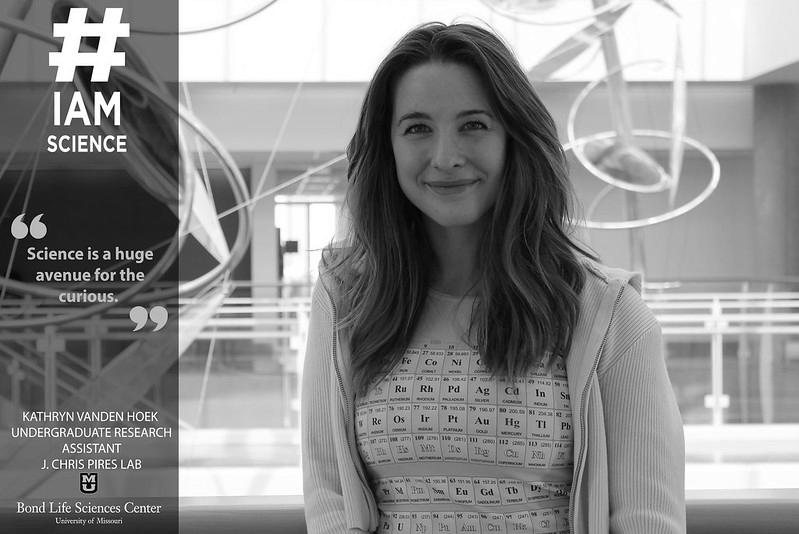CD Lab AG began in 1990 as a software service company. The company is headquartered in Murten, Switzerland. The company’s main offices house the WinCan development team and serve as the worldwide distribution center. CD Lab is a global leader in pipe inspection software, and its WinCan software is fully compatible with camera equipment from all major manufacturers. The company’s subsidiaries include WinCan Deutschland GmbH, located near Lake Constance, Germany, and WinCan Europe Ltd., located south of London.

Food safety
Students enrolled in a Food Safety Laboratory (FSL) at Cornell University are exposed to hands-on research in various fields. The lab focuses on current agricultural and biological issues. These students assist faculty with a variety of research projects. These include identifying the prevalence of multi-drug resistant bacteria and determining the genetic relatedness of bacteria. They also learn about laboratory quality assurance/control. These programs prepare students for successful careers in the field of food safety.
The Food Laboratory also provides specialized analytical services for the New York State Department of Health and other state agencies. The lab analyzes nearly 20,000 samples annually. Its testing efforts have led to almost 200 food recalls and 2,208 adulterated food seizures in 2018. In addition, the lab’s work has been instrumental in creating the New York State Department of Health’s Center of Excellence on Food Research. The center’s goal is to establish health-based limits for contaminants in food.
The Food Safety Modernization Act (PSR) is a new regulatory framework for the food industry. This law requires food and feed testing laboratories to meet specific standards. These requirements have been updated, so it is essential to understand how to comply with the regulations and follow best practices. Producers can detect and prevent contamination from pathogens, chemicals, and physical contaminants by having a comprehensive food safety program.
If you have concerns about the safety of agricultural products, you can request a test to determine their quality. There are various types of tests performed at different stages of the production process. For instance, air testing can detect indicator organisms. These organisms can spread through the air and affect the safety of food products. Regular food safety testing is crucial for protecting consumers and the environment.

Chemistry
The course focuses on the extensive laboratory component of Agricultural Chemistry. It connects life science, earth science, and physical science principles to agricultural applications. It also emphasizes writing and oral reporting skills. It also provides a foundation in organic chemistry. In addition, the course will include topics such as the behavior of gases, ionic and covalent bonding, and chemical periodicity.
This lab uses a variety of instruments and methods to analyze food, wastewater, veterinary drugs, and pesticide residues. ISO-17025-accredited and provides analytical food, environmental, and crop protection expertise. It also supports investigations aimed at improving soil health and crop production.
Qualitative analysis involves separating the components of a mixture and confirming the presence of specific materials. One of the most common qualitative analyses involves identifying aqueous ions. In this analysis, a substance is dissolved in a solution of HCl and iron (III). These ions are then separated and identified by a method that determines their identity.
Pipettes
One of the essential features of lab pipettes is that they protect sample integrity by eliminating direct contact with the liquid. They also allow researchers to transport, dispense and extract juices safely without contamination. Additionally, pipettes reduce the risk of repetitive strain injury (RSI) in laboratory workers. Pipettes also facilitate the speedy processing of large quantities of samples and simplify routine tasks.

Different types of pipettes are used for various applications. A sterile filter tip can help protect sensitive assays, while extended-length bonuses allow the user to reach the bottom of long test tubes. Other types of tips include gel loading tips that make loading gels easier. These tips also feature a hydrophobic surface that helps reduce sample loss due to adhesion.
Pipettes are a crucial part of laboratory workflows, and their selection can improve the efficiency of experiments. The proper pipetting technique is essential for ensuring reliable results and adhering to GLP/GMP regulations. As a result, manufacturers are increasingly providing training resources to help scientists understand how to use pipettes.
Pipettes should be cleaned regularly. This is time-consuming in a lab setting but can significantly increase their lifespan. Generally, pipettes need to be serviced every six to 12 months. This ensures their accuracy and prevents costly issues. Pipettes should also be checked for visible damage. After cleaning, pipettes should be air-dried and lubricated.
Spectrophotometers
Spectrophotometers are a valuable tool for analyzing the chemical composition of substances. They provide a simple and accurate means of detecting specific pollutants. Several industries use spectrophotometers for various purposes. For example, water quality testing can use spectrophotometers to measure the concentration of trace amounts of mercury in water. These instruments are available in both benchtop and portable models.

Some spectrophotometers are portable and require no maintenance. Some are battery-operated, while others use AC power. These devices are typically large and heavy, using a shoe-box-sized power outlet. They must be installed in a single location and are often difficult to move. Additionally, technicians must transport samples to and from the instrument, creating bottlenecks in the lab. As a result, choosing a spectrophotometer that will fit your needs is essential.
Spectrophotometers have two primary types: scanning and non-scanning. The former scans a wide range of wavelengths and records the absorbance at each wavelength. Some models feature preset scanning speeds. Other types have adjustable scanning rates. The Aquarius model by Cecil Instruments is an excellent choice because it offers variable scanning rates and PC connectivity through a USB port. A suitable spectrophotometer should have low noise to ensure high sensitivity and reduce stray light.
Agricultural spectrophotometers have many applications, including monitoring the quality of the soil. They can identify organic molecules in farm products, such as nitrogen and phosphorus. They can even be used to determine the chemical composition of fertilizers.
Fertilizer raw materials
Fertilizer raw materials can produce different kinds of fertilizers for lab agriculture. One crucial factor is particle size. This is important both for handling and agronomic reasons. Ideally, materials should be finely ground. This increases solubility. However, fine materials can get dusty. In contrast, granular materials are less dusty than fine ones. Most fertilizers are processed through a coarse screen, while others pass through a more OK screen.

Other materials can be added to fertilizers to provide more nutrients. Calcium, for example, can be obtained from limestone, which contains calcium sulfate. Magnesium can be obtained from dolomite. Sulfur, copper, and molybdenum are extracted from mines. These raw materials are reacted to make compound fertilizers.
Fertilizer raw materials are a vital component of any lab agriculture process. Fertilizers are typically supplied to farmers in large bags. A large hopper is used to deliver fertilizer into the load. Then, a clamping device holds the bag open. Then, the bag is moved upright to another machine that seals it. Afterward, the bag is conveyed to a palletizer, where it is stacked on pallets for shipment to farmers.
Fertilizer manufacturers monitor the quality of their products at every stage. They use sophisticated technical equipment and experienced testing experts. These methods ensure the safety and quality of fertilizers. The results of these tests are published in authoritative and fair reports. This ensures that the final fertilizer will meet the specifications set by the manufacturer.
Fertilizer raw materials are available in various forms and blends. They are blended and manufactured in several locations around the world. Due to their limited supply, their prices can fluctuate year-to-year. In addition, the costs of shipping raw materials to different countries affect fertilizer prices.






